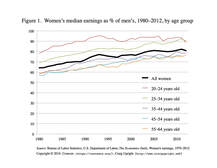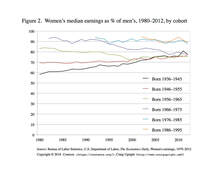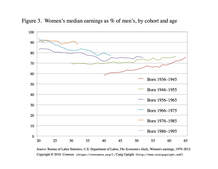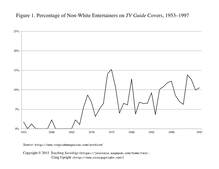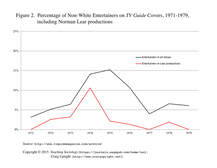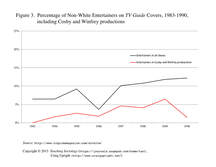Craig Upright. 2023. “Addressing Consumer Desires for Sustainable Food Systems: Contentions and Compromises.” Annual Review of Food Science and Technology. 14:411–425.
https://www.annualreviews.org/doi/abs/10.1146/annurev-food-060721-022439
Abstract:
Consumers and social movement activists have been the driving force to create alternative, sustainable food systems over the past 100 years. Although larger agribusiness market players and the state were at first reluctant to respond to these concerns, as organic food products (the most prominent example of alternative food) became a viable economic market, these market players embraced them. The international trade of organic food has developed into a major agricultural and retail sector, but with this growth many of the varied original critiques of conventional, industrial farming practices have yet to be adequately addressed. Every major advancement in sustainable agriculture has raised new issues of equity and access for producers, laborers, and consumers. Although consumers often believe that they are contributing to a project of larger social change with every market transaction they make, the continued success of the organic food system has spurred calls for more explicit forms of collective behavior to promote the larger goals of the original sustainable agriculture movements.
https://www.annualreviews.org/doi/abs/10.1146/annurev-food-060721-022439
Abstract:
Consumers and social movement activists have been the driving force to create alternative, sustainable food systems over the past 100 years. Although larger agribusiness market players and the state were at first reluctant to respond to these concerns, as organic food products (the most prominent example of alternative food) became a viable economic market, these market players embraced them. The international trade of organic food has developed into a major agricultural and retail sector, but with this growth many of the varied original critiques of conventional, industrial farming practices have yet to be adequately addressed. Every major advancement in sustainable agriculture has raised new issues of equity and access for producers, laborers, and consumers. Although consumers often believe that they are contributing to a project of larger social change with every market transaction they make, the continued success of the organic food system has spurred calls for more explicit forms of collective behavior to promote the larger goals of the original sustainable agriculture movements.
Your browser does not support viewing this document. Click here to download the document.
| upright_2023.pdf | |
| File Size: | 307 kb |
| File Type: | |
Craig Upright. 2017. “The Converging Gender Wage Gap.” Contexts. 16 (1): 72–74.
https://journals.sagepub.com/doi/full/10.1177/1536504217696079
(first published at https://contexts.org/blog/the-converging-gender-wage-gap-1980-2012/ )
https://journals.sagepub.com/doi/full/10.1177/1536504217696079
(first published at https://contexts.org/blog/the-converging-gender-wage-gap-1980-2012/ )
Abstract:
During the 1970s, women’s greater integration into the economy coincided with significant cultural and structural changes. When the federal Bureau of Labor Statistics first calculated the gender wage gap in 1979, the average earnings received by women were less than two-thirds those of men. As both the images and the realities of women successfully navigating professional careers became more commonplace, the wage gap disparity steadily narrowed; progress has largely stalled since 2000. Curiously, this disparity looks less pronounced when we consider the wage gap for women in specific age groups. While the trends for the age groups are generally positive, that apparently is not the case for members of different cohorts.
During the 1970s, women’s greater integration into the economy coincided with significant cultural and structural changes. When the federal Bureau of Labor Statistics first calculated the gender wage gap in 1979, the average earnings received by women were less than two-thirds those of men. As both the images and the realities of women successfully navigating professional careers became more commonplace, the wage gap disparity steadily narrowed; progress has largely stalled since 2000. Curiously, this disparity looks less pronounced when we consider the wage gap for women in specific age groups. While the trends for the age groups are generally positive, that apparently is not the case for members of different cohorts.
Your browser does not support viewing this document. Click here to download the document.
| upright_2017.pdf | |
| File Size: | 271 kb |
| File Type: | |
Craig Upright. 2015. “Bringing Color into the Living Room: Analyzing TV Guide Covers, 1953 to 1997.” Teaching Sociology. 43 (3): 214–26.
https://journals.sagepub.com/doi/10.1177/0092055X15588561
https://journals.sagepub.com/doi/10.1177/0092055X15588561
Abstract:
Many contemporary students are unfamiliar with the cultural history of television programming in the United States. References to iconic series that represented significant milestones in minority representations and discussions of racial issues—such as
I Spy, Julia, All in the Family, or even The Cosby Show—fail to serve as useful examples when instructors cannot assume widespread familiarity. The exercise described in this note uses cover images from the magazine TV Guide between 1953 and 1997 to illustrate changing representation of minorities, present an overview of television programming history, and provide an opportunity to apply theoretical insights. Using a web-based archive of the magazine covers, the students can observe the emergence of nonwhite entertainers not only on the television screens but also onto the coffee tables of mainstream American families. This exercise can precede several discussions about racial issues, such as minority representation, cultural reflection, or post-civil-rights-era history.
Many contemporary students are unfamiliar with the cultural history of television programming in the United States. References to iconic series that represented significant milestones in minority representations and discussions of racial issues—such as
I Spy, Julia, All in the Family, or even The Cosby Show—fail to serve as useful examples when instructors cannot assume widespread familiarity. The exercise described in this note uses cover images from the magazine TV Guide between 1953 and 1997 to illustrate changing representation of minorities, present an overview of television programming history, and provide an opportunity to apply theoretical insights. Using a web-based archive of the magazine covers, the students can observe the emergence of nonwhite entertainers not only on the television screens but also onto the coffee tables of mainstream American families. This exercise can precede several discussions about racial issues, such as minority representation, cultural reflection, or post-civil-rights-era history.
Your browser does not support viewing this document. Click here to download the document.
| upright_2015.pdf | |
| File Size: | 206 kb |
| File Type: | |
Craig Upright. 2004. “Social Capital and Cultural Participation: Spousal Influences on Attendance at Arts Events.” Poetics. 32 (2): 129–43.
https://www.sciencedirect.com/science/article/abs/pii/S0304422X04000129
https://www.sciencedirect.com/science/article/abs/pii/S0304422X04000129
Abstract:
Empirical efforts to study the determinants of participation in the arts have demonstrated that adult attendance at arts events is influenced by adolescent exposure to the arts, educational attainment, and current income. While many have illuminated the impact of family socialization and individual characteristics, they have neglected the ways in which people’s social relationships influence their adult participation in the arts. This paper begins to redress this imbalance by focusing on the role of one crucial relationship—the tie between spouses—in shaping attendance at arts events. The importance of socialties is demonstrated by the finding that spouse’s background has an impact on an individual’s arts participation comparable to one’s own characteristics and that this effect persists even net of one’s spouse’s own attendance. Consistent with theories of a gendered division of cultural labor, men’s attendance is more strongly influenced by spousal characteristics than is women’s attendance.
Empirical efforts to study the determinants of participation in the arts have demonstrated that adult attendance at arts events is influenced by adolescent exposure to the arts, educational attainment, and current income. While many have illuminated the impact of family socialization and individual characteristics, they have neglected the ways in which people’s social relationships influence their adult participation in the arts. This paper begins to redress this imbalance by focusing on the role of one crucial relationship—the tie between spouses—in shaping attendance at arts events. The importance of socialties is demonstrated by the finding that spouse’s background has an impact on an individual’s arts participation comparable to one’s own characteristics and that this effect persists even net of one’s spouse’s own attendance. Consistent with theories of a gendered division of cultural labor, men’s attendance is more strongly influenced by spousal characteristics than is women’s attendance.
Your browser does not support viewing this document. Click here to download the document.
| upright_2004.pdf | |
| File Size: | 245 kb |
| File Type: | |
